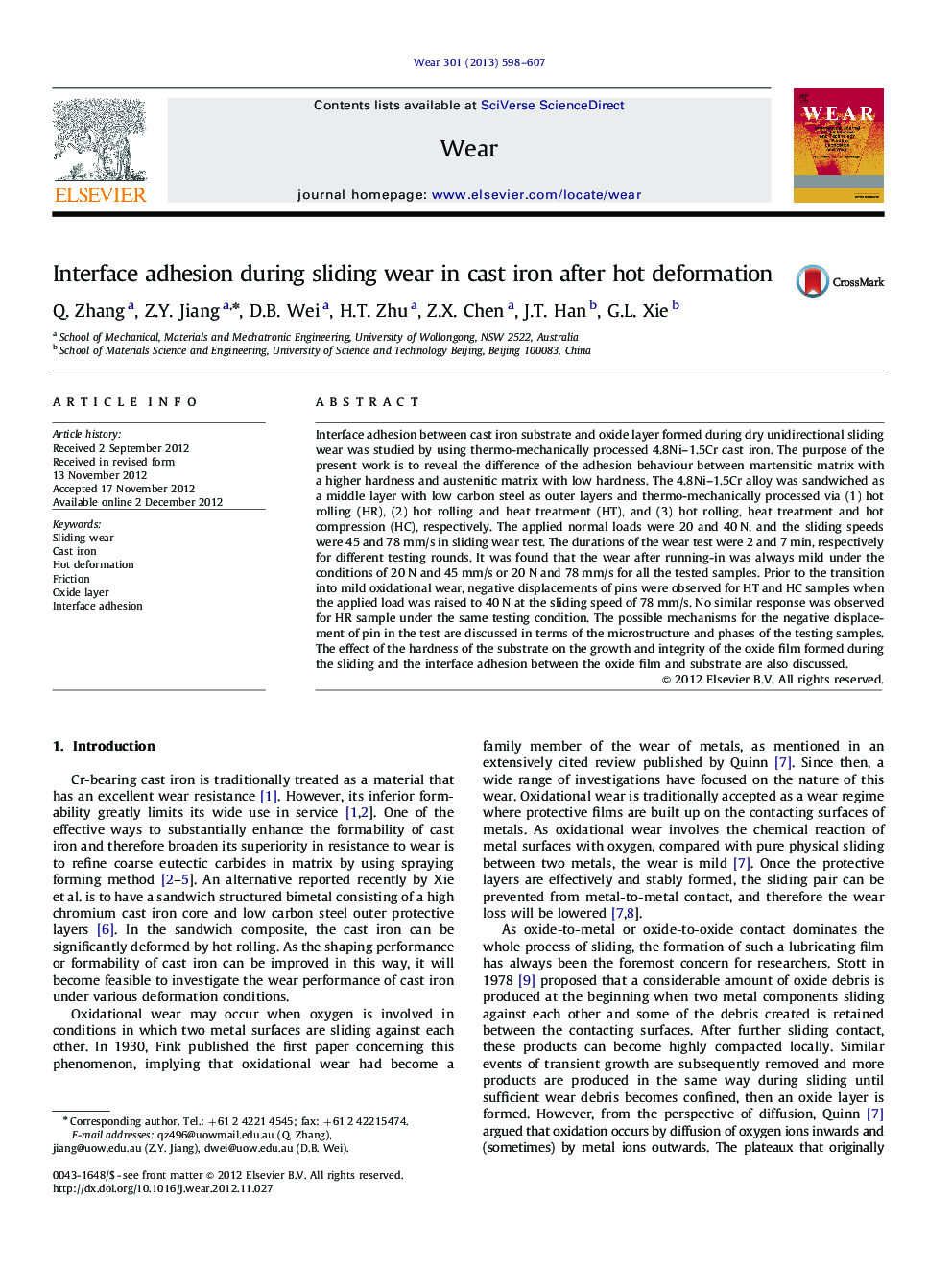| Article ID | Journal | Published Year | Pages | File Type |
|---|---|---|---|---|
| 617570 | Wear | 2013 | 10 Pages |
Interface adhesion between cast iron substrate and oxide layer formed during dry unidirectional sliding wear was studied by using thermo-mechanically processed 4.8Ni–1.5Cr cast iron. The purpose of the present work is to reveal the difference of the adhesion behaviour between martensitic matrix with a higher hardness and austenitic matrix with low hardness. The 4.8Ni–1.5Cr alloy was sandwiched as a middle layer with low carbon steel as outer layers and thermo-mechanically processed via (1) hot rolling (HR), (2) hot rolling and heat treatment (HT), and (3) hot rolling, heat treatment and hot compression (HC), respectively. The applied normal loads were 20 and 40 N, and the sliding speeds were 45 and 78 mm/s in sliding wear test. The durations of the wear test were 2 and 7 min, respectively for different testing rounds. It was found that the wear after running-in was always mild under the conditions of 20 N and 45 mm/s or 20 N and 78 mm/s for all the tested samples. Prior to the transition into mild oxidational wear, negative displacements of pins were observed for HT and HC samples when the applied load was raised to 40 N at the sliding speed of 78 mm/s. No similar response was observed for HR sample under the same testing condition. The possible mechanisms for the negative displacement of pin in the test are discussed in terms of the microstructure and phases of the testing samples. The effect of the hardness of the substrate on the growth and integrity of the oxide film formed during the sliding and the interface adhesion between the oxide film and substrate are also discussed.
